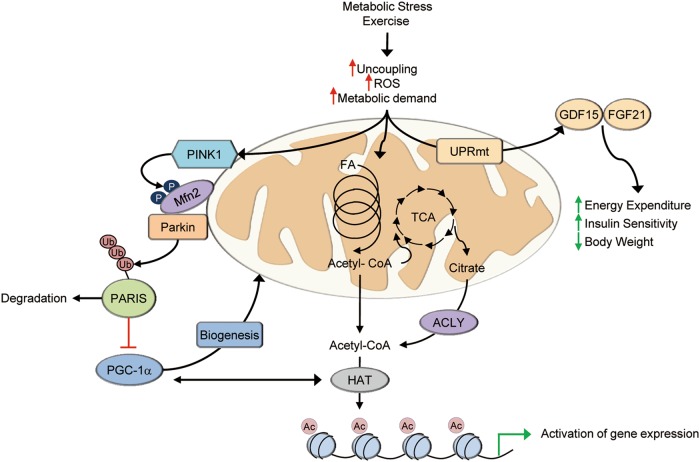Fig. 3.
Skeletal muscle mitochondria serve as cellular sensors of metabolic demand and stress. Various forms of metabolic stress including exercise triggers responses in muscle mitochondria that result in signals to other cellular compartments or tissues. Increased mitophagy is integrated with biogenesis through activation of PGC-1α, either directly or through mechanisms such as PARIS. Activation of gene expression by PGC-1a also occurs in cooperation with histone acetyltransferases (HAT). Acetyl-CoA generated by increased mitochondrial respiration can donate acetyl groups for histone modifications. Paracrine or endocrine signals can also be generated, at least in part, by activation of the mitochondrial unfolded protein response (UPRmt) that leads to increases in GDF15 and FGF21 production and secretion. PARIS Parkin interacting substrate, ACLY ATP citrate lyase, HAT histone acetyltransferase, Ac acetyl, Ub ubiquitin, FA fatty acid, UPRmt mitochondrial unfolded protein response

